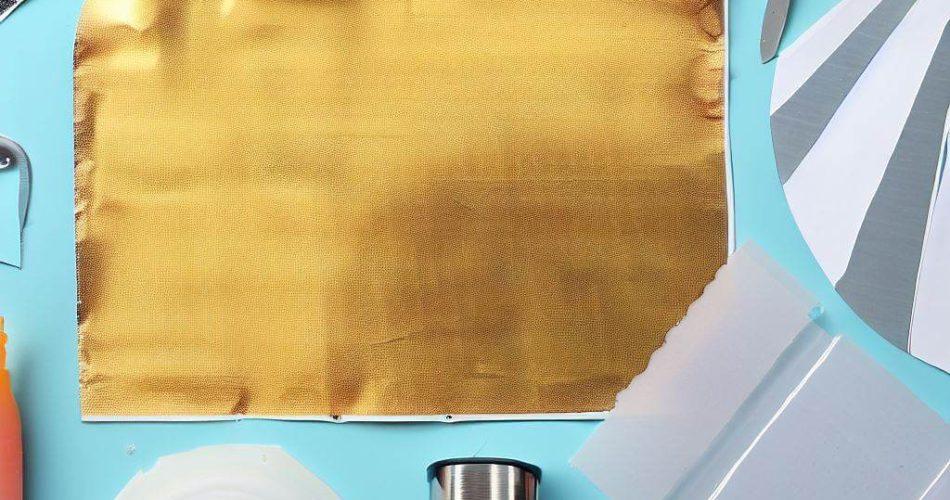Introduction
Living in our modern, high-tech world means being surrounded by a vast array of gadgets and devices. From cellphones to microwaves to WiFi routers, these devices make our lives more convenient, keeping us connected and productive. Yet, they all emit something called electromagnetic fields (EMFs). While EMFs are a common part of our daily lives, there’s a growing concern about the potential effects they might have on our health. This has led many people to seek out ways to protect themselves, including DIY shielding methods. This article aims to guide you through understanding EMFs, their possible impacts on health, and how you can craft your own protection.
Understanding EMFs
What are EMFs?
Electromagnetic fields (EMFs) are invisible areas of energy, often referred to as radiation, that are associated with the use of electrical power and various forms of natural and man-made lighting. EMFs are categorized into two types: non-ionizing and ionizing. Non-ionizing EMFs are low-level radiation, perceived as less harmful due to their lack of potency to directly damage DNA. These are typically emitted by common electrical devices such as laptops, cellphones, and routers. On the other hand, ionizing EMFs, which include ultraviolet rays and X-rays, are high-level radiation with potential to cause cellular and DNA damage.
How Do They Impact Our Health?
The impact of EMFs on our health is a topic of ongoing research. Non-ionizing EMFs, the type most common in our daily lives, aren’t powerful enough to cause direct damage to cells or DNA, but there is increasing concern that long-term exposure could have subtle, yet significant, health effects. For instance, some studies have suggested a potential link between long-term exposure to low-level EMFs and certain types of cancer, neurological diseases, depression, and sleep disorders.
It’s important to note that the World Health Organization (WHO) and other health bodies maintain that the current evidence does not confirm the existence of any health consequences from low-level, long-term exposure to EMFs. However, research continues due to the widespread use of devices emitting EMFs and the potential for a large public health impact should the evidence eventually prove a definitive link between EMFs and health problems.
With that said, the ongoing debate and uncertainty around the health effects of EMFs have led many people to seek ways to reduce their exposure, including crafting their own EMF shielding methods, which we will explore further in this article.
The Need for EMF Shielding
Given the ubiquitous nature of devices emitting non-ionizing EMFs in our everyday life, the desire for EMF shielding is understandable. While the scientific community continues to investigate the potential long-term effects of low-level EMF exposure, some individuals have decided not to wait for definitive results and are taking action now.
The need for EMF shielding arises from the desire to protect oneself from possible harmful effects of prolonged exposure. It stems from the precautionary principle: even in the absence of 100% scientific certainty about the health risks of EMFs, it may be wise to reduce exposure as a preventative measure. The goal of EMF shielding is to create a barrier between you and the EMF source, lowering your exposure levels.

DIY EMF Shielding: What is it?
Do-it-yourself (DIY) EMF shielding is the practice of using common materials, or easily procured products, to create barriers or shields that can reduce the level of EMF radiation exposure. This approach has gained popularity due to its cost-effectiveness and the empowerment that comes with taking control of one’s environment.
DIY EMF shielding projects can range from simple to complex. They might include placing specific types of fabric around your Wi-Fi router, using certain types of paint on your walls, or even building special enclosures around your bed. These shielding techniques aim to block or limit the penetration of EMFs into the spaces we occupy the most, thereby reducing the level of exposure.
The effectiveness of DIY EMF shielding varies based on the materials used and the correct implementation of the shield. For instance, materials like aluminium foil can reflect and absorb some EMFs, and specialized EMF blocking paint can be used to create a barrier on your walls. It’s essential to understand that while DIY shields can reduce exposure, they won’t eliminate EMFs entirely. The best practice remains to limit the use of, and proximity to, devices that emit EMFs whenever possible.
It’s also crucial to approach DIY EMF shielding with an understanding of its limitations and the scientific nuances of EMF exposure, to avoid potential pitfalls and ensure your efforts are as effective as possible. As we delve deeper into this topic, we’ll provide some practical DIY EMF shielding strategies, their effectiveness, and safety precautions.
DIY EMF Shielding Strategy #1: EMF Shielding Paint
EMF shielding paint is a popular DIY strategy for reducing exposure to EMFs in your home. This type of paint contains particles of metal (often silver or nickel) that can help block EMFs.
How to Use It
EMF shielding paint is applied like any regular paint. Before application, ensure that the surface is clean and free from dust or grease. Apply the paint in at least two layers for optimal protection, allowing each layer to dry fully before applying the next.
After painting, it’s important to ground the paint to reduce any electric fields that it may generate. This usually involves connecting a grounding strap from the painted surface to an earthing rod or a grounded part of your home’s electrical system. Remember to consult a professional if you’re unsure how to do this safely.
Pros and Cons
Pros: EMF shielding paint can be a highly effective way to block EMFs. It is particularly useful for shielding large areas, like walls or ceilings, and for areas with high EMF readings.
Cons: Despite its effectiveness, EMF shielding paint is relatively expensive compared to regular paint. The grounding process can also be complicated and requires some knowledge of electrical systems. Furthermore, once applied, the paint is difficult to remove.
DIY EMF Shielding Strategy #2: EMF Blocking Fabrics
EMF blocking fabrics are textiles infused with metallic elements like silver or copper. These fabrics can be used to create curtains, canopies, or clothing, which can help protect against EMFs.
How to Use It
EMF blocking fabrics can be used in a variety of ways. They can be turned into curtains for windows or canopies over beds to create a protective barrier. If you’re handy with a sewing machine, you can even fashion clothing items like shirts or headwear from these fabrics.
Pros and Cons
Pros: EMF blocking fabrics are versatile and easy to use. They can be made into a wide range of items to suit your needs, from simple curtains to full bed canopies.
Cons: EMF blocking fabrics can be expensive, and their effectiveness varies depending on the type of fabric, its metal content, and the frequency of the EMFs you’re trying to block. The fabric also needs to be grounded to be fully effective, which can be a complex process for some. Plus, while a curtain or canopy may reduce exposure while you’re behind or under it, it won’t block EMFs from devices inside that space.

DIY EMF Shielding Strategy #3: EMF Shielding Film
EMF shielding film is a thin material that can be adhered to windows to help block EMFs from entering your home. It works similarly to tinting film for cars or windows, but with the added benefit of reducing EMF exposure.
How to Use It
EMF shielding film is applied to the inside of windows. Before application, ensure the window is clean. Then, carefully measure and cut the film to the size of the window. Apply a small amount of soapy water to the window to allow for adjustments as you apply the film. Starting from the top, gradually stick the film onto the window, smoothing it out as you go to remove air bubbles.
Pros and Cons
Pros: EMF shielding film can be particularly effective for blocking EMFs from cell towers or other external sources. It also has the added benefit of reducing heat and glare from the sun, much like a regular window tint.
Cons: EMF shielding film requires careful application to avoid air bubbles or creases. It may also reduce the amount of natural light coming in through the windows. In addition, while it can help block EMFs from external sources, it won’t reduce EMFs from devices inside your home.
DIY EMF Shielding Strategy #4: EMF Shielding Canopy
An EMF shielding canopy is a large fabric structure, similar to a mosquito net, that you can hang over your bed to protect against EMFs while you sleep.
How to Use It
Setting up an EMF shielding canopy involves hanging the canopy over your bed. This usually requires attaching hooks to the ceiling and suspending the canopy from these. The canopy should drape down to the floor to create a complete enclosure. Ensure the fabric overlaps at the opening to keep it fully sealed.
Pros and Cons
Pros: An EMF shielding canopy can provide a high level of protection, especially during sleep when your body is in recovery mode and potentially more susceptible to the effects of EMFs. It’s also relatively easy to set up and doesn’t require any permanent modifications to your home.
Cons: EMF shielding canopies can be quite expensive. Some people also find the canopy to be obtrusive or claustrophobic. Additionally, like EMF blocking fabrics, the canopy won’t reduce EMFs from devices inside the enclosed area, so you’ll need to remember to keep your phone and other devices out of your bed.
Effective EMF Mitigation: Combining Shielding and Lifestyle Changes
While DIY EMF shielding strategies can be a significant part of reducing your EMF exposure, it’s also important to consider other lifestyle changes. Firstly, reducing the use of EMF-emitting devices is the most direct method of EMF mitigation. This can include limiting time spent on smartphones, laptops, or other electronics, especially before bedtime as these devices can interfere with sleep patterns.
Secondly, maintaining distance from these devices when in use can also help. For example, using a hands-free headset instead of holding your phone to your ear, or keeping Wi-Fi routers in less frequented areas of the house.
Thirdly, turning off devices or putting them on airplane mode when not in use can further reduce EMF exposure. Unplugging electronics and appliances can also be beneficial, as they can emit EMFs even when turned off but still plugged in.
Lastly, keeping a healthy lifestyle can boost your body’s natural resilience against EMFs. Regular exercise, a balanced diet, sufficient hydration, and good sleep can all contribute to overall well-being and help your body deal with potential EMF effects.
The Limitations of DIY Shielding and When to Consult a Professional
DIY EMF shielding can provide a level of protection against EMFs, but it’s not a panacea. EMF shielding materials can only reduce EMFs; they can’t eliminate them completely. They also don’t reduce EMFs from devices inside the shielded area. In addition, the effectiveness of the shielding depends on proper installation, and in some cases, this can be challenging to achieve without professional help.
If you’re experiencing severe or unexplained health symptoms that you suspect may be due to EMFs, it’s a good idea to consult a healthcare provider. Similarly, if you’re considering major renovations to your home for EMF shielding, or if your home is near a cell tower or power line and you’re concerned about high levels of EMFs, you might want to consult a professional who specializes in EMF mitigation. They can conduct a thorough EMF survey of your home and suggest the most effective solutions based on their findings. DIY methods are useful, but they are just one part of the equation when it comes to safeguarding your environment against EMFs.
Conclusion
EMF exposure is an inevitable part of our technologically advanced world, but that doesn’t mean we have to be passive recipients of its potential effects. DIY EMF shielding provides an accessible and effective way to reduce exposure to these invisible yet impactful frequencies. From EMF shielding paint and fabrics to EMF shielding film and canopies, each DIY strategy has its unique applications and advantages, so you can choose what works best for your specific needs.
However, it’s important to remember that DIY shielding is just one tool in the larger EMF protection toolbox. Lifestyle changes, such as reducing device use, maintaining a healthy lifestyle, and keeping distance from EMF-emitting devices, can also contribute significantly to overall EMF mitigation. And in cases of high EMF exposure or severe health symptoms, consulting a professional might be necessary. With a combination of awareness, actionable strategies, and professional support, we can navigate the EMF-filled landscape of our modern world with more confidence and less risk.
FAQs
1. How effective is DIY EMF shielding?
DIY EMF shielding can be quite effective in reducing exposure to EMFs. However, effectiveness varies depending on the material used, the correct installation, and the source of the EMF. It’s important to remember that while shielding can significantly reduce EMFs, it cannot eliminate them entirely.
2. Is it difficult to install DIY EMF shielding materials?
The difficulty level varies depending on the material. Some, like EMF shielding paint or fabric, can be relatively straightforward, while others, like an EMF shielding film for windows, might require more careful application. Always follow the manufacturer’s instructions to ensure effective installation.
3. What other methods can I use to reduce EMF exposure?
In addition to DIY EMF shielding, you can reduce EMF exposure by limiting use of EMF-emitting devices, maintaining distance from these devices, turning off devices when not in use, and keeping a healthy lifestyle.
4. When should I consult a professional for EMF protection?
If you’re experiencing severe health symptoms you suspect may be due to EMFs, or if you’re considering major renovations for EMF shielding, it might be worth consulting a professional. A professional can also be helpful if your home is near a high-EMF source like a cell tower or power line.
5. Can EMF shielding materials block all EMFs?
No, EMF shielding materials can reduce EMFs but can’t eliminate them completely. Also, they don’t block EMFs from devices inside the shielded area. That’s why it’s important to combine shielding with other strategies like reducing use of EMF-emitting devices.

